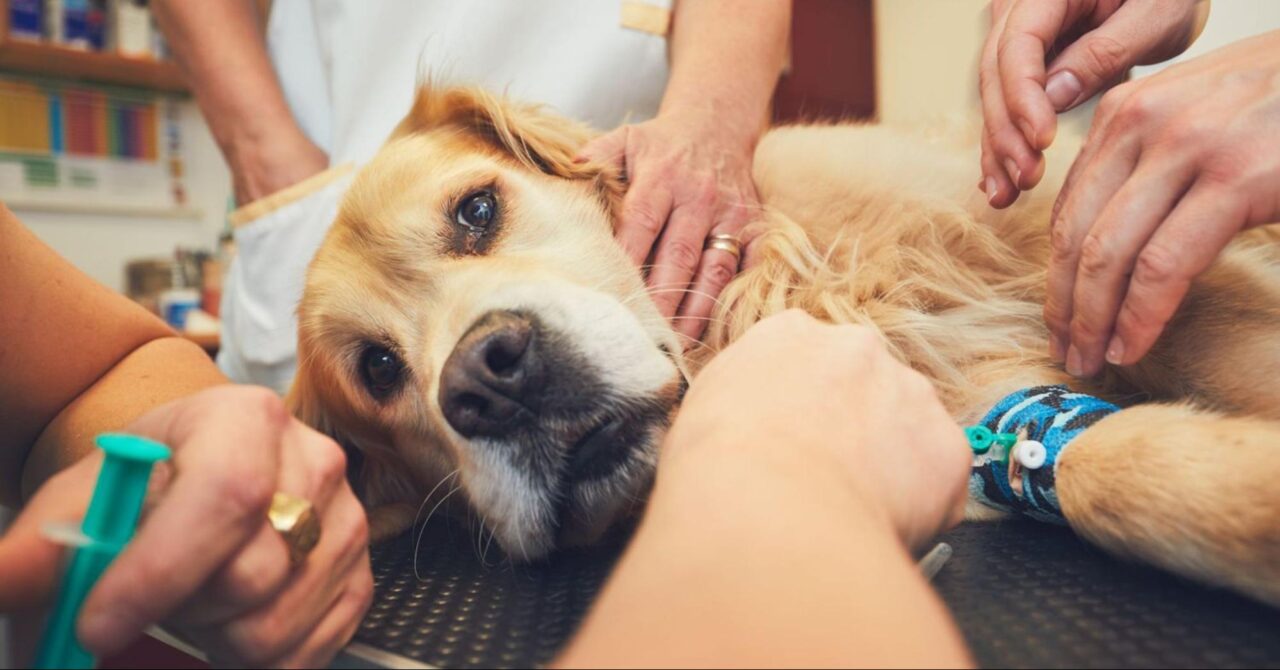
Pyoderma in dogs is a common yet distressing condition that can affect our beloved pets. As responsible pet owners, we seek effective home treatments that can alleviate their discomfort and promote healing. This article will provide a thorough understanding of pyoderma, its symptoms, causes, and, most importantly, the best home treatments to ensure your dog recovers swiftly and comfortably.
Understanding Pyoderma in Dogs
Pyoderma, derived from the Greek words ‘pyo’ meaning pus, and ‘derma’ meaning skin, is a bacterial skin infection that manifests in various forms, ranging from mild to severe. Superficial pyoderma affects the outer layers of the skin, while deep pyoderma penetrates deeper into the skin tissues, causing more serious issues.
Common Symptoms of Pyoderma
Recognizing the symptoms of pyoderma is crucial for early intervention. The most common symptoms include:
- Redness and swelling: Inflamed areas that are often warm to the touch.
- Pustules and sores: These are small, pus-filled bumps that can rupture and form crusts.
- Hair loss: Affected areas may show signs of hair thinning or bald patches.
- Itching and discomfort: Dogs often scratch or lick the infected areas excessively.
- Foul odor: In severe cases, the infection can emit an unpleasant smell.
Causes of Pyoderma in Dogs
Understanding the root causes of pyoderma can help in prevention and effective treatment. The primary causes include:
- Bacterial infections: Staphylococcus intermedius is the most common bacterium responsible for pyoderma.
- Allergies: Food allergies, flea allergies, and environmental allergens can trigger pyoderma.
- Hormonal imbalances: Conditions such as hypothyroidism can predispose dogs to skin infections.
- Poor grooming: Lack of proper grooming can lead to the accumulation of dirt and bacteria on the skin.
- Weakened immune system: Dogs with compromised immune systems are more susceptible to infections.
Effective pyoderma in dogs home treatment
While consulting a veterinarian is essential for accurate diagnosis and treatment, several home remedies can support the healing process and provide relief to your dog.

1. Proper Hygiene and Grooming
Maintaining your dog’s hygiene is the first step in treating and preventing pyoderma. Regular bathing with a medicated shampoo containing ingredients like chlorhexidine or benzoyl peroxide can help eliminate bacteria and soothe the skin. Ensure you thoroughly dry your dog’s coat to prevent moisture buildup, which can exacerbate the condition.
2. Topical Treatments
Antibacterial ointments and creams can be applied directly to the affected areas. Look for products containing ingredients like mupirocin or neomycin, which are effective against bacterial infections. Natural alternatives such as aloe vera gel and coconut oil can also provide soothing relief and promote healing.
3. Dietary Adjustments
A nutritious diet can strengthen your dog’s immune system and aid in recovery. Consider incorporating foods rich in omega-3 fatty acids, such as fish oil, which have anti-inflammatory properties. Additionally, probiotics can improve gut health and boost the immune system, helping to fight off infections.
4. Herbal Remedies
Certain herbs have antibacterial and anti-inflammatory properties that can help treat pyoderma. Calendula and chamomile can be brewed into tea and used as a rinse for your dog’s skin. Goldenseal powder mixed with water can be applied as a paste to the affected areas to reduce infection and promote healing.
5. Environmental Control
Maintaining a clean environment is crucial for preventing the recurrence of pyoderma. Regularly wash your dog’s bedding, toys, and grooming tools to eliminate bacteria. Ensure your home is free from allergens and fleas, which can trigger or worsen the condition.
6. Hydration and Skin Moisturization
Keeping your dog hydrated is essential for overall health and skin condition. Make sure your dog always has access to clean, fresh water. Applying natural moisturizers like coconut oil can prevent the skin from drying out and reduce itching and irritation.
7. Monitoring and Regular Check-ups
Monitor your dog’s condition closely and note any changes or improvements. Regular check-ups with your veterinarian are essential to track the progress of the treatment and make necessary adjustments.
When to Seek Veterinary Care
While home treatments can be highly effective, it is important to recognize when professional veterinary care is needed. Seek veterinary attention if:
- The infection worsens or does not improve with home treatments.
- Your dog exhibits signs of severe discomfort, such as constant scratching or biting at the affected areas.
- There are signs of systemic infection, such as fever, lethargy, or loss of appetite.
- The pyoderma recurs frequently, indicating an underlying issue that needs to be addressed.
Preventing Pyoderma in Dogs
Prevention is always better than cure. Here are some tips to help prevent pyoderma in your dog:

Regular grooming: Maintain a consistent grooming routine to keep your dog’s coat clean and free from dirt and bacteria.
Balanced diet: Ensure your dog receives a nutritious diet to support a healthy immune system.
Flea control: Use flea preventatives to avoid flea infestations, which can trigger allergic reactions and skin infections.
Allergen management: Identify and minimize exposure to potential allergens in your dog’s environment.
Pyoderma in Dogs Home Treatment Olive Oil
Olive oil can be a beneficial home remedy for pyoderma in dogs. It has natural anti-inflammatory and moisturizing properties that help soothe irritated skin. Applying a small amount of olive oil to the affected areas can reduce dryness and itching, promoting a faster recovery.
Is Pyoderma in Dogs Contagious?
Pyoderma in dogs is generally not contagious to other dogs or humans. It is typically caused by a bacterial infection specific to the individual dog. However, the underlying causes, such as fleas or allergies, can be shared among pets in the same household, necessitating comprehensive care and prevention.
Can Pyoderma Kill a Dog?
While pyoderma itself is not usually fatal, severe cases can lead to significant discomfort, systemic infection, and other complications if left untreated. Prompt veterinary care and appropriate home treatments are essential to prevent the condition from worsening and ensure your dog’s well-being.
Best Antibiotic for Pyoderma in Dogs
The best antibiotic for pyoderma in dogs depends on the specific bacteria causing the infection. Commonly prescribed antibiotics include cephalexin, clindamycin, and amoxicillin-clavulanate. A veterinarian will perform tests to determine the most effective antibiotic for your dog’s condition.
Pyoderma in Dogs Causes
Pyoderma in dogs can be caused by various factors, including bacterial infections, allergies (food, flea, or environmental), hormonal imbalances, poor grooming, and a weakened immune system. Identifying and addressing the underlying cause is crucial for effective treatment and prevention of recurring infections.
Conclusion
Pyoderma in dogs can be a challenging condition, but with the right knowledge and home treatments, it can be managed effectively. By maintaining proper hygiene, using appropriate topical and herbal remedies, ensuring a nutritious diet, and keeping your dog’s environment clean, you can help your furry friend recover swiftly and prevent future occurrences.
FAQs
What is the most common cause of pyoderma in dogs?
Bacterial infections, particularly by Staphylococcus bacteria, are the most common cause. Knowing this can help you take preventative measures to protect your furry friend.
Can pyoderma in dogs be contagious?
Generally, pyoderma itself isn’t contagious to humans or other animals. However, the bacteria causing the infection can spread if your dog has an open wound, so keeping their environment clean is crucial.
How long does it take for pyoderma to heal?
The healing time can vary depending on the severity of the infection and the treatment used. With proper care and treatment, most cases start to improve within a week, but complete healing might take several weeks.
Are there any breeds more prone to pyoderma?
Yes, some breeds like Bulldogs, Boxers, and Golden Retrievers are more prone to skin infections due to their skin folds and allergies. Being aware of this can help you take proactive steps in their care.
Can diet alone cure pyoderma in dogs?
While a balanced diet is crucial for overall health and can support the healing process, diet alone is often not enough to cure pyoderma. A combination of proper nutrition, hygiene, and sometimes medications is typically needed.













